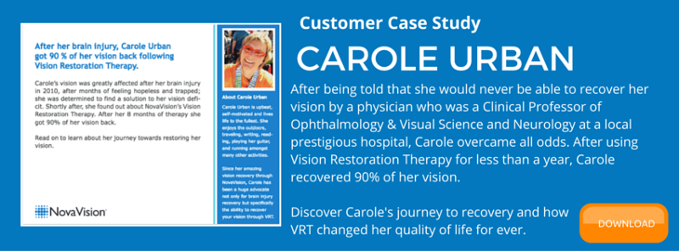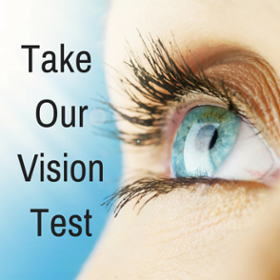
Following a stroke, you might experience difficulties with any number of things ranging from movement and balance to emotional changes and memory loss. Vision loss can also occur after a stroke, which may also have a significant effect on your daily life and overall recovery. Often times, vision issues may be overlooked following a stroke, either because the doctors are focused on more severe side effects or because the patient isn’t even aware how much their vision has been affected, making it often difficult to diagnose and therefore treat. Whether you aren’t fully aware of the extent of your vision loss or maybe heard some misinformation in the past, we have 9 facts about stroke and resultant vision disorders that you need to know:
Up to two thirds of people experience some changes to their vision after a stroke.
Vision loss after stroke is likely more common than you think. According to Stroke.org, up to 66% of all stroke survivors will experience some change to their vision following the event.
Vision loss also known as visual field loss, is common after stroke.
It is estimated that approximately 20% of stroke sufferers end up with a permanent visual field deficit. Specific types of visual field loss include Hemianopia, Quadrantanopia and Scotoma.
Apparent loss of vision in one eye can be a sign of an impending stroke
Before a person suffers from a stroke, they may have already experienced a Transient Ischemic Attack or TIA. Vision loss to either the left or right side of the visual field can be a symptom of a TIA while visual field deficits in both eyes is the most common form of visual field deficit post a stroke.
Educational, rehabilitative, and medical practices are still debated today.
The complexities surrounding vision loss due to neurological damage to the brain has been the subject of much discussion and debate throughout the community of professionals who treat these cases. Consensus has not been reached on the definition, assessment, and services needed to address vision loss of this kind which is why some doctors may not be aware of some of the solutions available today.
Neurological Vision loss is most commonly homonymous.
Homonymous vision loss means that your vision is affected in both eyes which is much more debilitating than losing vision in just one eye as it cannot be compensated for.
You may be discharged from care before ever noticing complications with your vision.
Although vision loss caused by damage to the brain has been has been the focus of increasing attention over the last decade, many clinics still don’t ordinarily test for it. A major reason visual deficits go undetected is because life threatening conditions are being treated first. Once a patient is stable, speech and motor problems typically take priority and vision therapy often gets ignored.
Not everyone suffering from vision loss has the ability to compensate.
The ability to naturally compensate for your own vision loss ranges depending on the person, the severity of their vision loss and other symptoms the patient may be recovering from. In addition to therapies that help restore your visual field, there are also options to improve your vision compensation. It is estimated that only about 20 per cent of patients are able to naturally compensate for their vision loss without clinical intervention
Vision Loss CAN be treated.
That’s right. Therapies such as NeuroEyeCoach lead to meaningful improvement in visual search performance, resulting in improvements in navigation skills and object finding. It also increases the efficiency of a patient’s eye movement and re-train patients’ ability to make the most of their remaining vision.
Vision Restoration Therapy takes recovery a step further, with over 70% of patients showing notable improvements in their vision upon completing the program. This therapy is designed to strengthen the visual information processing of residual neuronal structures that have survived following acute lesions of the nervous system resulting from trauma, stroke, inflammation, or elective surgery for removal of brain tumors.
There is a great deal of science supporting solutions for loss of vision.
Take the two therapies above, for example. NeuroEyeCoach was originally developed by Prof. Zihl and has since been used with various modifications in 13 studies on a total of 551 patients with homonymous visual field loss and persistent visual disabilities. Vision Restoration Therapy provides actual improvement in the range or sensitivity of the patient’s field of vision. NovaVision’s VRT uses repetitive light stimulation to activate impaired visual functions in areas of partial injury (“transition zones”), strengthening the residual vision and neuronal networks. Approximately 70% of patients experience positive outcome reflected by an increase in their visual field this is also supported by the findings in a 302 patient study.
As neurological vision loss following stroke is increasingly gaining the attention of medical communities and stroke communities alike, the best thing you can do is arm yourself with background information. Take the time to familiarize yourself with clinical studies and the science behind the solutions available to you or your loved ones. Always ask your doctor specific questions about how your vision may be affected and finally, if you need help finding a doctor or pursuing treatment for an existing vision deficit don’t be afraid to ask for help.



